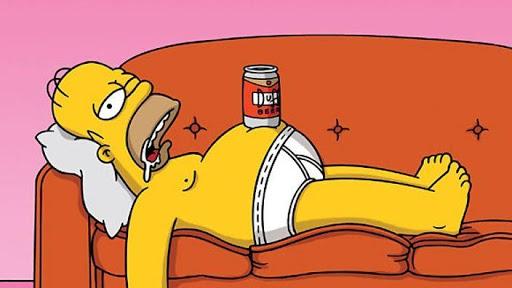Assistant Principal - Pastoral Care

The State of Masculinity
As we celebrate Father’s Day this weekend it is an opportune time to consider the state of masculinity in our culture. Boys will be boys, a maxim often used in our society – but what does that mean? How do boys know what it actually means to be a boy in a post-modern world? Is it something innate, part of the genetic and hormonal make-up of a boy, something that is inevitable or is it something cultural? Something learned from observing others and put into practise day after day?
When the main character of The Sopranos, Tony Soprano said:
‘Let me tell ya something. Nowadays, everybody's gotta go to shrinks, and counselors, and go on "Sally Jessy Raphael" and talk about their problems. What happened to Gary Cooper? The strong, silent type. That was an American. He wasn't in touch with his feelings. He just did what he had to do. See, what they didn't know was once they got Gary Cooper in touch with his feelings that they wouldn't be able to shut him up! And then it's dysfunction this, and dysfunction that, and dysfunction blah!’
Tony articulated the contemporary conundrum for males – the traditional images of what it means to be a man are no longer available or acceptable and not much else has been put in its place, as a consequence we are undergoing a crisis in what it means to be a man with devastating consequences for many individuals and our society as a whole.
But what crisis you may ask?
Suicide in Australia
The most recent Australian data reports deaths due to suicide in 2017 at 3,128
This equates to more than eight deaths by suicide in Australia each day
Deaths by suicide in Australia occur among males at a rate three times greater than that for females.
For every death by suicide, it is estimated that as many as 30 people attempt to end their lives
That is approximately 65,300 suicide attempts each year
Incarceration in Australia
In 2018 there were over 42 000 prisoners in Australia
Males are the majority of the prison population accounting for 92% of total prisoners.
The most prevalent offences were:
- Acts intended to cause injury- 22%
- Illicit drug offences - 16%
- Sexual Assault - 12%
Domestic Violence in Australia
In 2018, 68 women murdered by their male partner or former partner
One in three women subjected to domestic violence
One in five women subjected to sexual assault
Car Accidents in Australia
Top four causes of fatal car accidents in 2016 were speeding, alcohol consumption, driver fatigue and inattention/distraction while driving. All four factors are easily prevented and within human control.
In 2017: 1,226 people were killed in road related deaths, over 3 people a day
Males made up 72% of all road fatalities in Australia from 2013-2017.
Males were overrepresented in crash categories where the road user was in control of the crash situation such as drivers, cyclists and motorcyclists, indicating a potential higher rate of risk taking behaviours in men than in women.
Men aged 25 to 34 were found to be 34% more likely to be involved in a car accident than other drivers.
From 2012 to 2017 males made up 70% of fatalities that occurred as a result of drink-driving.
Males also have a higher number of reported incidents of speeding and mobile phone use in the nation.
Social Isolation in Australia
The ABS estimates that 60% of people aged 18 and over counted as experiencing homelessness were men.
Overall levels of loneliness for men are higher than women, the Relationships Australia study found.
The highest rates of loneliness were reported by younger men who were widowed, followed by divorced and separated men in the Relationships Australia research.
Compared to women, Australian men not only see their GP less often, but when they do access a health professional it is for shorter consultations, and typically when a condition or illness is advanced.
Alcohol in Australia
between 1996 and 2005, an estimated 32,000 Australians died from alcohol-attributable injury and disease caused by risky or high risk drinking.
In the 10 years between 1995/96 and 2004/05 an estimated 813,000 hospitalisations in Australia were caused by alcohol.
72% of Australian men who were physically assaulted by another man said the perpetrator had been drinking or taking drugs
Almost half (47%) of women physically assaulted and most (84%) women who were sexually assaulted by a man said that the perpetrator had been drinking or taking drugs
These statistics provide a startling and disturbing insight to where men are at in our community. To these facts you can add academic attainment statistics in the HSC which clearly indicates more girls are receiving the HSC than boys and they are out performing them as never before. Over the last 10 years for the first time in our history, females now make up a greater proportion of students at university than males.
So what is creating this crisis in masculinity?
Since the 1980s traditional masculine roles have been challenged by rapid economic change. Previously, industrial society provided a sure and secure place for traditional masculine values. Boys were able to make the transition from school to the workplace with ease. Boys who found school a burden and irrelevant often found work in the trades or manual labour. In today’s economy, trade positions are highly competitive to obtain and manual work is being increasingly replaced by technology. The growth areas of the economy are in the tertiary and quaternary sectors requiring a wide range of skills other than physical size and strength which has been the province of men for much of our socialised history. Now you need:
Ability to set goals and follow them through;
Self-Management;
Self-Evaluation;
Communication Skills;
Problem Solving;
Working in Teams;
Using Information Technology.
In the last 10 to 15 years a plethora of evidence has been presented to show that boys are underachieving at school. Whilst it is generally accepted that boys are falling behind the reasons for this are hotly disputed. In the 1970s and 1980s programs were put in place to ensure gender equity for girls – much of this work was underpinned by studies into gender construction. Similar work is now being carried out with boys’ educational programs as it becomes increasingly clear that traditional masculine constructs can be antithetical to educational achievement.
For many, particularly men, the idea that gender is not a natural state of being but actually a social construct, something our society imposes upon us, is difficult to accept or acknowledge. The gender theorist, Judith Butler argues that
“As we grow, we are conditioned to see and understand bodies in specific and political ways. Being female or male is not a natural fact, but a cultural code and performance, a repeated stylization of the body that congeals over time and produces the appearance of substance, of a natural being.”
“gender is an act, a performance, a set of manipulated codes, costumes, rather than a core aspect of essential identity” Gender is a “cultural fiction” enforced by “the punishments that attend not agreeing to believe in them.”


